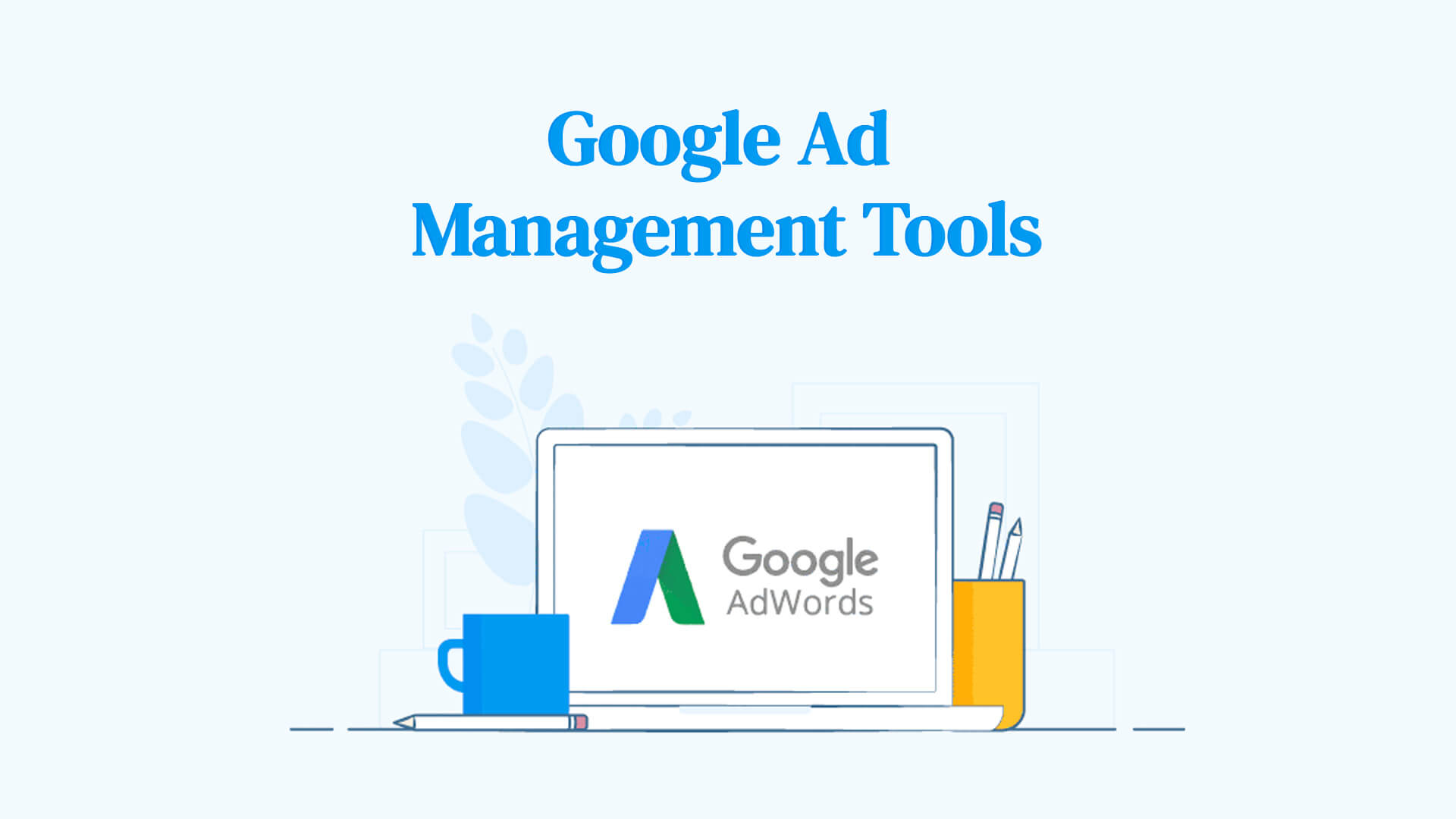
In the fast-paced world of digital marketing, Ads Managementstands as the linchpin for businesses aiming to carve their mark in the competitive landscape. It's the strategic orchestration of campaigns, a blend of art and science, weaving together analytics, creativity, and consumer behavior insights to propel brands to the forefront. Effective AdsManagement isn't merely about launching campaigns; it's about precision targeting, relentless optimization, and staying ahead of the curve in an ever-evolving digital ecosystem.
Mastering Ads Management requires a keen understanding of platforms, audience segmentation, ad formats, and the ever-changing algorithms governing visibility. It's a dynamic discipline demanding adaptability and agility, where every click, impression, and conversion serves as a guidepost toward greater success. Those who grasp the nuances of Ads Management unlock the power to transform mere ads into captivating brand narratives that resonate with audiences, driving engagement.
Strategies For Explosive Ads Management
Managing ad campaigns effectively can be a daunting task, but with the right strategies in place, you can achieve explosive success. Here are 10 proven strategies to help you optimize your ad campaigns and reach your target audience:
1. Refine And Optimize Continuously
Advertising is an ongoing process that requires constant refinement and optimization. Based on your campaign performance data, make adjustments to your ad copy, targeting, bids, and budgets to improve results. Stay up-to-date with the latest advertising trendsand best practices to ensure your campaigns remain effective.
2. A/B Test Different Ad Variations
A/B testing is a powerful method for determining which ad variations perform best. Experiment with different headlines, images, calls to action, and targeting options to see what resonates most with your audience.
3. Track Campaign Performance Regularly
Regularly monitor the performance of your ad campaigns using the analytics tools provided by the advertising platforms you're using. Track key metrics such as impressions, clicks, conversion rates, and cost per acquisition. Use these insights to identify areas for improvement and optimize your campaigns accordingly.
4. Leverage Audience Targeting Options
Most advertising platforms offer advanced targeting options that allow you to reach specific segments of your audience based on their demographics, interests, behaviors, and online activity. Utilize these options to ensure your ads are seen by the people most likely to be interested in your offerings.
5. Use High-Quality Visuals
Visuals can make a significant impact on the effectiveness of your ads. Use high-quality images, videos, or graphics that are relevant to your product or service and capture attention. Ensure your visuals are consistent with your brand identity and messaging.
6. Craft Compelling Ad Copy
Your ad copy is the first thing people will see, so make it count. Use strong headlines, clear and concise descriptions, and persuasive calls to action. Highlight the unique benefits your product or service offers and address the pain points of your target audience.
7. Choose The Right Advertising Platforms
There are numerous advertising platforms available, each with its strengths and weaknesses. Select the platforms that align best with your target audience and the type of ads you want to run. Consider platforms like Google Ads, Facebook Ads, LinkedIn Ads, and Twitter Ads.
8. Set Realistic Budgets And Bids
Determine the financial resources you have allocated for your ad campaigns. Set realistic budgets and bidding strategies that align with your goals and the competitive landscape of your industry. Monitor your campaign performance closely and adjust your bids accordingly.
9. Know Your Target Audience
Understanding your ideal customer is essential for creating ads that resonate with them. Conduct thorough market research to identify their demographics, interests, pain points, and online behavior. This will help you craft compelling ad copy and target your campaigns effectively.
10. Define Clear Goals And Objectives
Before you even start creating ads, it's crucial to have a clear understanding of what you want to achieve with your advertising efforts. Are you aiming to increase brand awareness, generate leads, drive sales, or a combination of these goals? Having clear objectives will help you tailor your ads and measure their success accordingly.
Understanding The Role Of Ads In Marketing
Advertising plays a pivotal role in marketing, serving as a powerful tool to connect businesses with their target audience and achieve their marketing objectives. It encompasses a wide range of communication methods aimed at informing, persuading, and reminding consumers about a product, service, or brand.
Core Objectives Of Advertising
- Competitive Positioning and Differentiation -Advertising allows businesses to stand out from competitors and highlight their unique strengths. It helps establish a competitive edge and attract customers seeking those specific offerings.
- Lead Generation and Customer Acquisition -Advertising can be used to capture contact information from potential customers, generating leads for further nurturing and conversion into paying customers. It expands the customer base and drives growth.
- Demand Generation and Sales Promotion -Advertising aims to stimulate consumer interest and desire, ultimately driving sales. It can promote special offers, discounts, or new product launches to incentivize purchases.
- Information Dissemination -Advertising provides valuable information about products or services, educating consumers about their features, benefits, and unique selling propositions. It helps consumers make informed purchasing decisions and builds trust in the brand.
- Brand Awareness and Recognition -Advertising helps establish and reinforce brand identity, making it recognizable and memorable among consumers. It creates a positive brand image and fosters familiarity, leading to increased brand loyalty and advocacy.
Types Of Advertising And Their Applications
- Public Relations and Influencer Marketing-Public relations involves building positive relationships with media outletsto generate favorable publicity, while influencer marketinginvolves collaborating with influential individuals to promote the brand to their followers.
- Social Media Marketing-This utilizes social mediaplatforms to connect with consumers, build relationships, and promote the brand. It fosters engagement and generates user-generated content.
- Content Marketing-This involves creating and sharing valuable, non-promotional content to attract and retain a clearly defined audience. It builds trust and establishes the brand as an expert in its field.
- Digital Advertising -This encompasses online advertising, including search enginemarketing (SEM), social media advertising, display advertising, and video advertising. It targets specific audiences based on their behavior and interests.
- Traditional Advertising -This includes mediums like television, radio, print, and outdoor advertising. It reaches a broad audience and creates a strong brand presence.
Measuring The Effectiveness Of Advertising
To determine the success of advertising campaigns, marketers track various metrics, such as:
- Cost per acquisition (CPA) -The average cost of acquiring a new customer through advertising.
- Conversion rate -The percentage of people who take the desired action, such as making a purchase or signing up for a newsletter.
- Click-through rate (CTR) -The percentage of people who click on the ad.
- Clicks -The number of times the ad is clicked on.
- Impressions -The number of times the ad is displayed.
- Reach -The total number of people exposed to the ad.
Google Ads Management Tools
Google Adsoffers a variety of tools to help you manage your campaigns effectively. These tools can be broadly categorized into the following groups:
1. Account management tools -These tools help you view, edit, and update your account efficiently. They include the following:
- Google Ads mobile app - Allows you to manage your campaigns on the go.
- Google Ads Editor -A desktop application for managing Google Ads campaigns offline.
- Manager accounts -Allow you to manage multiple Google Ads accounts from a single interface.
2. Performance monitoring tools - These tools help you track the performance of your campaigns and make adjustments as needed. They include:
- Conversions report -Shows you the number of conversions that your ads have generated.
- Search terms report -Shows you the actual search terms that triggered your ads.
- Keywords overview -Shows you the performance of your keywords.
- Campaigns dashboard -Provides an overview of your campaign performance.
- Video ads -Video ads that appear on YouTube and other websites.
- Shopping ads -Product ads that appear on Google Search results pages and other websites.
- Display ads -Image or video ads that appear on websites and apps.
- Text ads -Standard text ads that appear on Google Search results pages.
3. Bid and budget management tools -These tools help you make the most of your advertising budget. They include:
- Automated bidding - Allows Google Ads to automatically set bids for your keywords based on your goals and budget.
- Manual bidding -Allows you to set your own bids for your keywords.
- Campaign budget -The maximum amount you're willing to spend on a campaign over a given time period.
4. Placement refinement tools -These tools enable you to optimize where your ad appears. They include:
- Device targeting - Allows you to target your ads to specific devices, such as computers, smartphones, and tablets.
- Audience targeing - Allows you to target your ads to specific audiences based on their interests, demographics, and behaviors.
- Placement targeting - Allows you to target specific websites or apps where you want your ads to appear.
5. Keyword tools - These tools provide resources for choosing effective keywords. They include:
- Keyword Research -A tool that helps you find relevant keywords for your business.
- Search Term Report - Show you the actual search terms that triggered your ads.
- Keyword Planner -A tool for researching and selecting keywords for your campaigns.
How To Create A Budget?
Creating a budget is a simple process that can be done in a few steps:
- Track your income and expenses for a month -This will give you a good starting point for understanding where your moneyis going.
- Set realistic goals for your income and expenses -What do you want to achieve with your budget? Are you trying to save more money? Pay off debt?
- Create a budget template -There are many different budget templates available online or in financial planning books. Choose one that works best for you.
- Enter your income and expenses into the budget template -Make sure to account for all of your income and expenses, including regular bills, discretionary spending, and savings.
- Review your budget regularly -Make sure to update your budget as your income or expenses change.
Cost Control Strategies
In addition to creating a budget, there are a number of cost-control strategies that you can implement to save money. Here are a few tips:
- Track your spending -The first step to controlling your spending is to track it. There are many different ways to do this, such as using a budgeting app, keeping a spending journal, or using a spreadsheet.
- Create a budget-friendly meal plan -Eating out can be a major expense. Save money by cooking more meals at home.
- Reduce your transportation costs -If you can, walk, bike, or take public transportation instead of driving.
- Cancel unused subscriptions -Do you have any subscriptions that you don't use? Cancel them to save money.
- Negotiate better rates on your bills -Call your service providers and see if you can negotiate better rates on your bills.
- Shop around for better deals -Before you make a purchase, compare prices from different retailers.
- Avoid impulse purchases -Don't buy things that you don't need or can't afford.
- Set financial goals -Having financial goals will help you stay motivated to save money.
Defining Your Advertising Goals And Objectives
Defining your advertising goals and objectives is the first step in creating a successful advertising campaign. Your goals should be specific, measurable, achievable, relevant, and time-bound (SMART). Your objectives should be more specific and actionable, and they should be aligned with your overall marketing goals.
Examples Of Advertising Goals
- Increase brand awareness
- Generate leads
- Drive sales
- Improve customer loyalty
- Promote a new product or service
Examples Of Advertising Objectives
- Increase website trafficby 20% in the next quarter
- Generate 100 qualified leads per month
- Increase sales by 15% in the next year
- Increase customer satisfaction by 10% in the next six months
- Generate 5,000 pre-orders for a new product by the launch date
Once you have defined your goals and objectives, you can start to develop your advertising strategy. Your strategy should outline the specific tactics you will use to achieve your goals, such as:
- The type of advertising you will use (e.g., display, search, social media)
- The target audience you will reach
- The messaging you will use
- The budget you will allocate
- The timeframe for your campaign
Once you have a plan in place, you can start to track your progress and make adjustments as needed. By carefully defining your advertising goals and objectives, you can increase your chances of success in your advertising campaigns.
FAQ's About Ads Management
What Does An Advertisement Manager Do?
An Advertising Manager, or Marketing Manager, is responsible for overseeing advertising projects, activities and channels used to reach customers. Their duties include setting goals and timelines for advertising campaigns, collecting data on customer reach and evaluating the success of advertising methods.
Is Ads Manager Free?
Yes, you read that right, our online ad managementapp, Ads Manager is 100% free and we won't charge you a penny!
How Do I Start Ads Manager?
- Make sure that you have a Facebook BusinessPage. Once you've created a Page, you'll automatically have an Ads Manager account.
- View your ad account settings to confirm your account information.
- Set up your payment method.
- Learn more about creating an ad to launch your first campaign.
Conclusion
Ads Management serves as the cornerstone of modern marketing strategies, wielding immense power to shape brands, drive conversions, and foster consumer engagement. As the digital landscape continues to evolve, effective Ads Management remains pivotal for businesses aiming to thrive amidst intense competition. It's not merely about crafting eye-catching advertisements; it's a strategic blend of data-driven insights, creative innovation, and an understanding of consumer behavior.
The journey through Ads Management involves constant adaptation, rigorous analysis, and a commitment to optimization. From setting clear objectives to selecting the right platforms, crafting compelling content, and fine-tuning targeting parameters, the process encapsulates a multifaceted approach. Moreover, the ability to decode metrics, derive actionable insights, and pivot strategies accordingly defines success in this dynamic realm.


